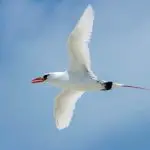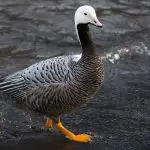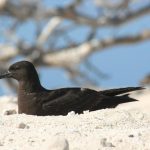Common Name: Surf Scoter
Scientific Name: Melanitta perspicillata| Size | Diet | Range in Hawaii | Status in Hawaii |
|---|---|---|---|
| 21 in. | marine invertebrates and small fish | Oahu | Least Concern |
The Surf Scoter (Melanitta perspicillata) is a fascinating bird that is known for its striking appearance and unique behaviors. This species of sea duck is found primarily along the Pacific and Atlantic coasts of North America, where it feeds on a variety of marine invertebrates and fish.
While the Surf Scoter is not a native species to Hawaii, it is known to occasionally appear in the islands during the winter months, when birds become disoriented during migration and end up in Hawaii by mistake. In this article, we will explore the biology and behavior of the Surf Scoter, as well as its potential impact on the environment and efforts to protect this species and its habitat.
Surf Scoter
Appearance

The Surf Scoter is a striking bird with a distinctive appearance. The male of the species has bold black and white plumage, with a black head and neck, white patches on the forehead and nape, and a bright orange bill.
The female is less colorful, with a brownish-black head and neck and a gray-brown body. Both sexes have a large, rounded bill that is highly specialized for feeding on marine invertebrates.
The Surf Scoter is a relatively large sea duck, measuring up to 21 inches in length and weighing up to 2.6 pounds. Its unique appearance and behavior make it a popular subject for birdwatchers and nature enthusiasts, and its presence in Hawaii during the winter months provides a unique opportunity for observation and study.
Diet
The Surf Scoter is a sea duck that feeds primarily on marine invertebrates and small fish. Its specialized bill is perfectly adapted for crushing and breaking open the hard shells of bivalves such as mussels and clams, which make up a large portion of its diet.
The Surf Scoter is also known to feed on a variety of other marine invertebrates such as crabs, snails, and shrimp, as well as small fish such as herring and sand lance. This species of sea duck is a skilled diver, able to stay underwater for up to a minute at a time while foraging for food.
Nesting
The Surf Scoter is a sea duck that nests in the northern boreal forests of North America. During the breeding season, females will select a nesting site near water, typically on the ground among vegetation or in a hollow tree.
The female will lay a clutch of 5-10 eggs, which she will incubate for about a month. Once the eggs hatch, the female will lead the young ducklings to water, where they will begin to learn how to swim and dive. The Surf Scoter is a dedicated parent, with both the male and female taking an active role in caring for the young.
Behavior
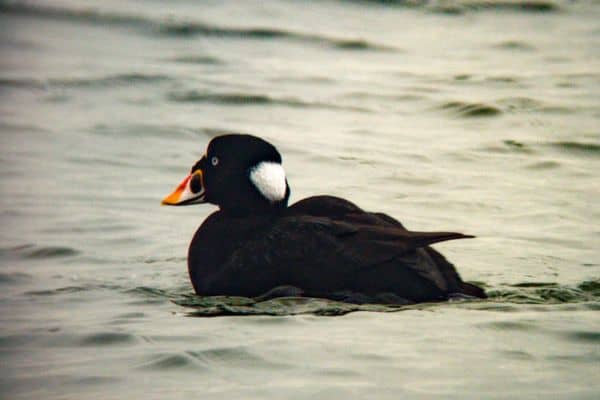
This bird species is known for its unique behavior and vocalizations. During the breeding season, males will engage in elaborate courtship displays, including head-bobbing, wing-flapping, and vocalizations.
These displays are designed to attract a mate and establish dominance over other males. The Surf Scoter is also a skilled and powerful swimmer, able to dive to great depths in search of food and evade predators.
This species of sea duck is highly social, often found in large flocks during the non-breeding season. The Surf Scoter is also known for its distinctive vocalizations, which include a variety of whistles, grunts, and quacks. These vocalizations are used for communication between individuals and may play a role in establishing social hierarchies within flocks.
Habitat
The Surf Scoter is a sea duck that is found primarily along the Pacific and Atlantic coasts of North America. This species of sea duck is highly adapted to life in marine environments and can be found in a variety of coastal habitats, including rocky shores, sandy beaches, and estuaries.
During the breeding season, the Surf Scoter nests in the northern boreal forests of North America, typically near water. The Surf Scoter is an important indicator species for the health of coastal habitats, as its presence or absence can be used as a measure of the overall health and biodiversity of these ecosystems.
The habitat of the Surf Scoter is a critical part of its biology, providing the resources and conditions necessary for this species to survive and thrive in the wild.
Range
While sightings of Surf Scoters in Hawaii are rare, they have been reported on several occasions in various locations across the islands, including Oahu. These sightings are typically during the winter months, when the birds are migrating to their wintering grounds.
Conservation Status
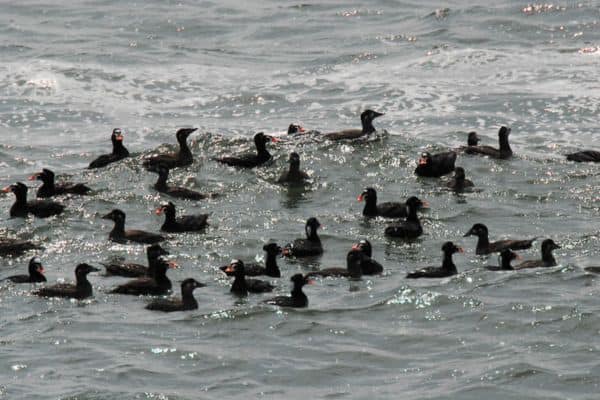
The Surf Scoter is currently listed as a species of “Least Concern” by the International Union for Conservation of Nature (IUCN). However, there are concerns about the long-term impact of habitat loss and degradation on local populations.
The Surf Scoter is highly dependent on healthy coastal habitats for its survival, and degradation of these habitats through pollution, development, and other human activities could have significant negative impacts on the species.
Additionally, the Surf Scoter is often hunted for sport, which can also have negative impacts on local populations. Efforts to protect and preserve coastal habitats, as well as regulate hunting practices, are critical for ensuring the long-term survival of the Surf Scoter and other sea duck species.
Interesting Facts
1. Highly specialized bill
The Surf Scoter has a highly specialized bill that is perfectly adapted for feeding on marine invertebrates such as mussels and clams.
2. Skilled and powerful swimmer
The Surf Scoter is a skilled and powerful swimmer, able to dive to great depths in search of food and evade predators.
3. They are highly social
The Surf Scoter is highly social, often found in large flocks during the non-breeding season.
4. Distinctive vocalizations
The Surf Scoter’s distinctive vocalizations, which include a variety of whistles, grunts, and quacks, are used for communication between individuals and may play a role in establishing social hierarchies within flocks.
5. Long-lived bird
The Surf Scoter is a long-lived bird, with some individuals living up to 14 years in the wild.
Frequently Asked Questions
1. How does the Surf Scoter communicate?
The Surf Scoter is known for its distinctive vocalizations, which include a variety of whistles, grunts, and quacks. These vocalizations are used for communication between individuals and may play a role in establishing social hierarchies within flocks.
2. Is the Surf Scoter hunted for sport?
Yes, the Surf Scoter is an important game bird, with hunting seasons established in some parts of its range.
3. Is the Surf Scoter a migratory bird?
Yes, the Surf Scoter is known to undertake long-distance migrations, traveling from its breeding grounds in the boreal forests to its wintering grounds along the coasts of North America.

